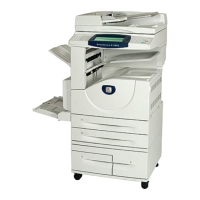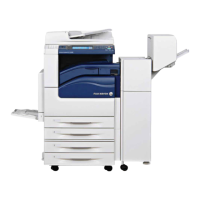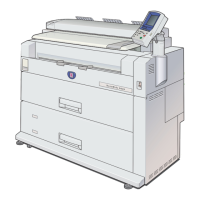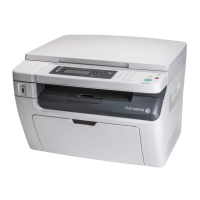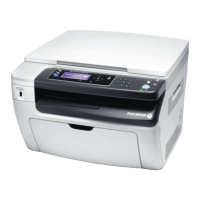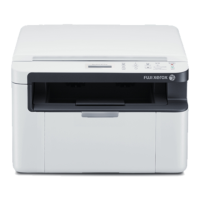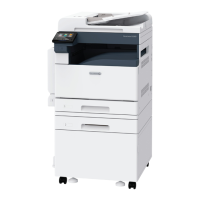293
17 Problem Solving
The machine has built-in information to identify and manage error messages and
problems. It also contains troubleshooting steps to help resolve problems.
Refer to the information contained in this chapter to resolve any troubleshooting issues.
NOTE: For troubleshooting network problems, refer to the Network Administrator
Guide.
Fault Clearance Procedure
If a fault or problem occurs, there are several ways in which you can identify the type
of fault. Once a fault or problem is identified, establish the probable cause, and then
apply the appropriate solution.
• If a fault occurs, first refer to the screen messages and animated graphics and clear
the fault in the order specified.
• If the problem is not solved by following the screen messages and graphics, refer to
Troubleshooting Tables on page 303 and apply the appropriate solution as
described.
• Also refer to the fault codes displayed on the touch screen in the Machine Status
mode. Refer to Fault Codes on page 306 for an explanation of some of the fault
codes and corresponding corrective actions.
• Alternatively, contact the System Administrator for assistance.
• In some cases, it may be necessary to switch the machine off and then on. Refer to
Power On/Off in the Product Overview chapter on page 33.
NOTE: Failure to leave at least 20 seconds between a power off and a power on can
result in damage to the additional hard disk of the machine.
• If the problem persists, or a message indicates that you should call for service,
contact our Customer Support Center.
NOTE: If fax jobs are queued in the machine not equipped with the hard disk and a
loss of power occurs, the machine will print a Power Off Report when the machine is
switched on. This will show a list of the fax jobs lost.

